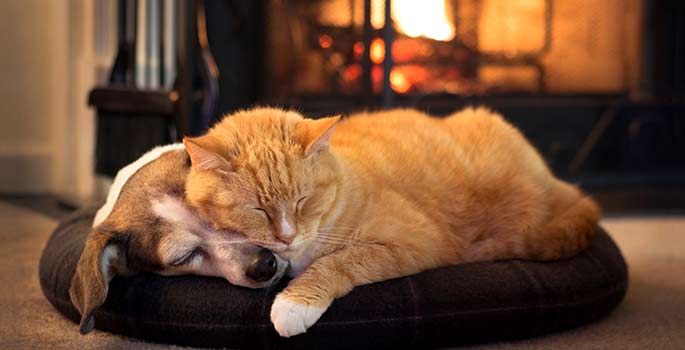Preparing for the Arrival of a New Pet
Your excitement builds as you anticipate your new pet’s arrival. To assure this new family member’s safe and easy transition into your home and life, thorough preparation is the key to success. Please follow these tips before bringing your new pet home:
Pet proof your home. Imagine that a toddler is coming to live with you! Puppies and kittens, and other young animals learn about the world through their mouths, so pick up and put away any item that could be within an animal’s reach. Also remove potentially dangerous or poisonous items such as electrical cords, needles, thread, string, ribbon, pins, medications, food items (particularly chocolate) and houseplants*. Cover furniture with throws or slipcovers if you plan to allow your pet on furniture.
Pet proof your yard. Fence off forbidden areas like water gardens or landscaping that contains poisonous plants* or cocoa bean shell mulch which is potentially deadly to dogs. Remove sharp objects and garden ornaments that may cause injury. A visibly fenced-in yard could be ideal, but always examine an existing fence for any openings or weak areas to prevent a pet’s escape. Plan to supervise dogs at all times and plan to walk them on a leash if you do not have a secure fenced-in area for them.
Purchase the equipment needed to house, contain, control, feed, groom and amuse your new pet. Buy the food that the pet has been accustomed to eating to prevent digestive upsets. Dogs will need: a crate with soft bedding, baby gates, bowls for food and water, an adjustable collar (not a choke chain) onto which tags will be attached, a 4 to 6 foot web leash, safe toys, grooming equipment, and piddle pads for house training. Cats will need: a litter box, litter and scoop, bowls for food and water, a crate/carrier to safely transport them, brush, comb, toys, and scratching posts.
Fish, reptiles and amphibians may need heaters and thermometers and covers for their tanks. Small mammals and birds will need: an easy-to-clean spacious cage or enclosure, bedding/nesting materials, detachable food and water dispensers, and safe toys for chewing and enrichment.
Position containment equipment. Place crates, birdcages, tanks, and aquariums on easy-to-clean surfaces in a draft-free quiet part of the house. Position baby gates across stairways, hallways and doorways to keep pets from entering unsafe or forbidden parts of your home. Litter boxes for cats and small mammals should not be placed too close to their designated feeding and sleeping areas.
Schedule an appointment with a veterinarian within 48-72 hours of your pet’s arrival even if the animal is not due for inoculations. This examination is an opportunity for the vet to become acquainted with your pet that might reveal undetected health issues. Bring any health records that were provided by a shelter, rescue group or breeder.
Devise a schedule for “pottying,” feeding, playing, napping and bedtime. Animals thrive and feel more secure when they have a daily routine to follow. Puppies will need to be walked frequently: every time after waking up, 15 to 20 minutes after eating, after playing and before bedtime. Owners are advised to take dogs out of the same door and to the same “potty” area consistently.
Be ready for a life-changing experience as you welcome a pet into your home and heart!
*Visit the ASPCA National Animal Poison Control Center’s website for a list of toxic house and landscaping plants.

